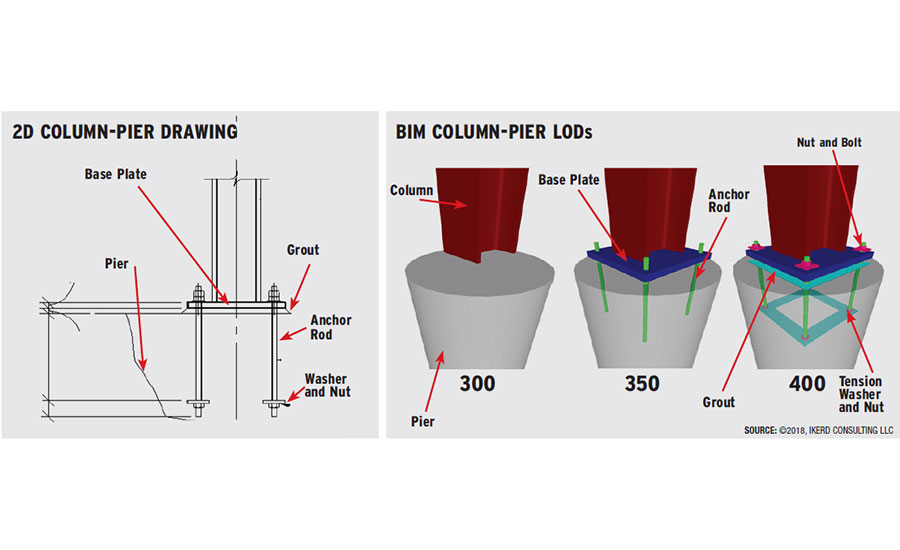Well over a decade ago, building information modeling enthusiasts heralded the relatively new digital tool as a cure for poorly coordinated drawings, component clashes, schedule delays, claims and even lawsuits. And though there have been gains on BIM-enabled projects, there are still big growing pains, agreed BIM design veterans at Structures Congress 2018.
One engineer even predicted BIM-related disputes are likely to grow in number, not shrink. “The frequency is increasing because there are more projects in BIM and typically, following a heavy construction cycle, lawsuits pick up,” said Will Ikerd, principal of Ikerd Consulting LLC, at the American Society of Civil Engineers/Structural Engineering Institute’s conference, which drew 1,114 registrants to Fort Worth, Texas, April 19-21.
As an expert witness for disputes, Ikerd has seen BIM-related suits on hospitals, offices, parking garages and bridges. “Any project with BIM can be susceptible,” said Ikerd, chairman of the BIMForum’s BIM Execution Planning Guide task force.
“This is an area for risk management,” he added. To avoid exposure, Ikerd advised designers to be clear and consistent, in writing and verbally, about BIM deliverables during contract negotiations with the owner, in plans and specifications and in the models themselves.
Unclear communication caused problems on a $100-million-plus U.S. hospital project, he said. An expert in the dispute, Ikerd declined to give the name of the hospital or any details about the 2013 confidential settlement, other than to say it favored the general contractor over the owner.
“The common takeaways from the case were that key trades believed they were entitled to a better design model from the general contractor and pointed to the lack of such a model as the reason for their cost and schedule overruns,” said Ikerd.
One aid to avoiding false expectations is the BIMForum LOD Specification, first published in 2013 and updated each year. The spec and its 12-page introduction, set to come out again June 1, is tantamount to a dictionary of the language used to define BIM scope, schedule and fees.
LOD means “level of development” for each component or element in the model, from columns to windows. There are six levels that correspond to different project stages, from conceptual design to an as-built model. “A big misconception is there is [a single] LOD for the entire model,” said Ikerd. “There isn’t, which is a source of confusion.”
If a designer promises an entire model at LOD 300—the contract document stage—the designer is promising something impossible to deliver, said Ikerd.
Another aid to increasing communication up front is the guide, due out in September. Intended for small and medium-sized projects, the guide is a Charles Pankow Foundation-funded project aimed at helping owners and their teams reach clarity in the use of BIM and LOD in contracts and construction documents.
Though BIM is becoming more widely used on projects, it is still far from a panacea, especially for structural engineers. “We want BIM, but it is very expensive and time-consuming to implement full BIM in our practice,” said Kevin G. Casey, a principal at BBM Structural Engineers Inc. “We have never gotten more fee to deliver a BIM,” he added.
There remain issues with the process as well. For each project, all details and notes are still produced in another tool and imported into the final documents, added Casey. Another blip is the proliferation of BIM in the cloud. If the service provider’s system goes down, it can interrupt the workflow for hours or even days. The engineers’ advice is to include the possibility of lost time in design contracts.
Integrated project delivery (IPD), a multiparty contracting method in which the owner, designer and contractor share risk and reward, was initially intended to help teams collaborate and share BIMs without fear of lawsuits. Though IPD is still a favorite of some owners, especially in health care, it falls far short of being a cure-all.
Dave Martin, a project engineer for Degenkolb, told of a $400-million IPD hospital where there was no profit. “We would do it again because our expenses were still covered,” he said.
David Odeh, a principal of Odeh Engineers, said exposing profit and staff pay, requisites of IPD, can be awkward. The architect can see the structural engineer’s numbers, which are often better, he said.
Even with the hiccups of BIM, there was agreement among structural engineers that BIM is here to stay. “The industry is not going to go backward,” said one.




Post a comment to this article
Report Abusive Comment